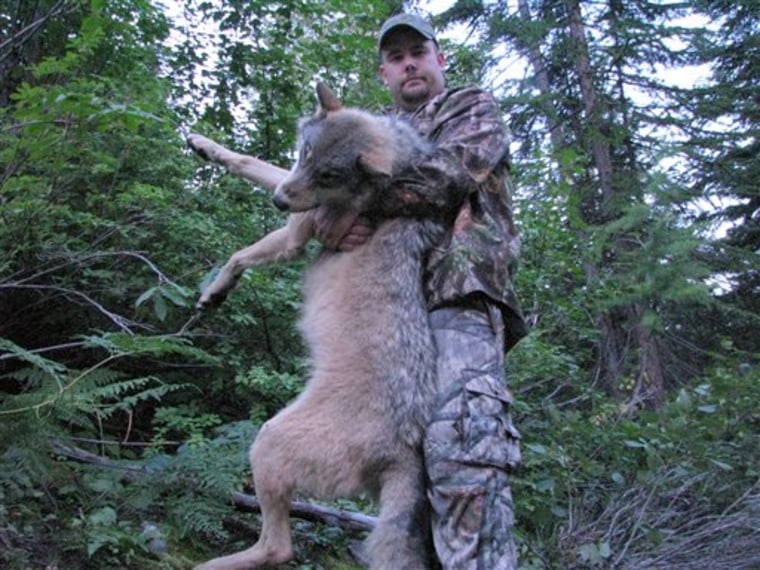A federal judge said Wednesday that gray wolf hunts in the Northern Rockies can go on, denying a request by environmentalists and animal welfare groups to stop the first legal wolf hunts in decades in Idaho and Montana.
U.S. District Judge Donald Molloy said plans to kill about 20 percent of the two states' estimated 1,350 wolves would not cause long-term harm to the population. He said federal biologists had shown the animal could sustain a 30 percent annual reduction without long-term harm.
But Molloy added that by carving Wyoming out of the recent decision to remove wolves from federal protection, the U.S. Fish and Wildlife Service appeared to violate the Endangered Species Act by making its decision based on political boundaries.
Molloy said that means environmentalists could ultimately prevail in their bid to restore endangered species protection for the animals.
"The Service has distinguished a natural population of wolves based on a political line, not the best available science," Molloy wrote in his 14-page opinion. "That, by definition, seems arbitrary and capricious."
Doug Honnold, the Earthjustice attorney who had argued the case on behalf of 14 groups opposed to the hunts, had a mixed reaction to the ruling.
"Obviously we're disappointed he did not issue an injunction," Honnold said, but added that the legal battle would continue against Fish and Wildlife. "If they violated the endangered species act, then this population eventually is going have to go back on the (endangered) list," Honnold said.
He added that he "took no comfort" in Molloy's statement that the population could withstand this year's hunt.
Representatives of the Fish and Wildlife Service could not be reached immediately for comment.
Hunters in Idaho have so far taken three wolves since wolf season opened there Sept. 1. The state has a quota allowing as many as 220 wolves to be killed. Montana's season is set to begin Sept. 15, with a quota of 75 wolves.
Jim Unsworth with Idaho Fish and Game said his state's hunt so far has gone smoothly.
"Everything is working just like we planned, which shouldn't be a surprise since we've done this for years with other critters," Unsworth said.
The wolves were removed from the endangered species list in those states just four months ago and after a controversial reintroduction program that started in 1995.
Environmental groups fear there aren't enough state protections in place to maintain their comeback.
"The human population successfully eradicated wolves from this region in the early part of the 20th century, and it would be a true shame after all the efforts that went into recovery if that happened again," said Jenny Harbine, an attorney for Earthjustice.
Gray wolves were once abundant across North America, but by the 1930s had been largely exterminated outside Alaska and Canada.
The federal government has kept about 300 wolves in Wyoming on the endangered list because the government has not approved the state's management plan.
Last year, about a dozen wolves were killed in Wyoming during a brief period when the state management plan declared wolves wandering outside established recovery zones could be shot and killed on sight. That policy was later scrapped by Molloy.
